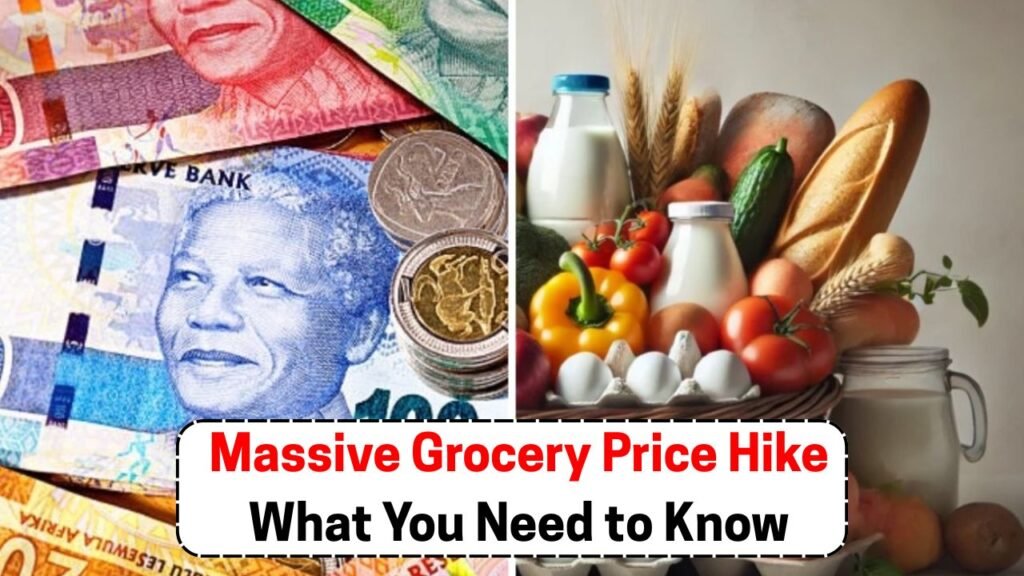August Shock: South African Families Confront a 12% Surge in Grocery Prices: In an unexpected turn of events, South African households are grappling with a dramatic 12% increase in grocery prices, as reported in August. This surge has sent ripples through communities, affecting not only the cost of staple foods but also the overall household budgets that are already strained by the rising cost of living. From the bustling markets in Johannesburg to the more rural areas of the Eastern Cape, families are feeling the pinch. The situation has sparked widespread concern as citizens and policymakers alike ponder the implications of this price hike on the nation’s economic landscape. With inflationary pressures mounting, the need for strategic interventions has never been more critical. The sudden price rise is attributed to a combination of local and global factors, including currency fluctuations, supply chain disruptions, and increased production costs.

Understanding the Causes Behind the 12% Grocery Price Surge
As South Africans face this August shock, it’s crucial to dissect the causes behind the sudden 12% surge in grocery prices. Several intertwined factors have converged to create this economic strain. Firstly, the global supply chain crisis, exacerbated by the ongoing geopolitical tensions, has played a significant role. Disruptions in the supply chain have led to delays and increased costs for imported goods. In South Africa, this has translated into higher prices for essential items that rely on imports, such as wheat and cooking oil. Additionally, the depreciation of the South African rand against major currencies has further inflated costs, making imports more expensive. Locally, unpredictable weather patterns have affected agricultural output, resulting in lower yields for key crops like maize and wheat, driving up prices. Furthermore, increased fuel prices have added to the cost of transporting goods across the country, directly impacting the final price consumers pay at the checkout. Understanding these factors is essential for both consumers and policymakers to navigate and mitigate the impact of such economic shocks.
The Impact of Rising Grocery Prices on South African Families
The 12% rise in grocery prices has profound implications for South African families, particularly those in lower-income brackets who spend a significant portion of their earnings on food. As prices soar, many households are forced to make difficult decisions, often sacrificing nutritional quality for affordability. This can lead to increased food insecurity, with families struggling to meet their dietary needs. The ripple effects extend beyond individual households to the broader economy, as consumer spending power diminishes. Retailers, too, are feeling the strain, as they balance the need to maintain profitability with the necessity of keeping prices within reach for their customers. Social welfare programs may see increased demand as more families seek assistance to put food on the table. This situation highlights the need for targeted government interventions to support vulnerable populations and stabilize the economy. By understanding the impact of these rising costs, stakeholders can work together to develop strategies that alleviate the burden on South African families.
Strategies to Cope with the 12% Increase in Grocery Prices
In response to the 12% surge in grocery prices, South African families are adopting various strategies to manage their household expenses. Budgeting has become more critical than ever, with many turning to financial literacy programs to better manage their resources. Consumers are increasingly seeking out discounts and promotions offered by retailers, while others are exploring bulk buying as a means to save on costs. Community initiatives, such as bulk purchasing groups and local food cooperatives, are also gaining traction, allowing individuals to pool resources for better purchasing power. Additionally, there’s a growing interest in urban gardening and home agriculture as families look to supplement their food supply with homegrown produce. Such initiatives not only reduce grocery bills but also promote sustainable living. By adopting these strategies, South Africans can better navigate the economic challenges posed by rising grocery prices, ensuring their families’ needs are met despite financial constraints.
Government Interventions to Address Grocery Price Inflation
As South African families confront the reality of rising grocery prices, government intervention becomes crucial in addressing this economic challenge. Policymakers are exploring various measures to mitigate the impact of inflation on consumers. One approach is to provide subsidies or tax relief for essential food items, making them more affordable for the average consumer. The government is also investing in agricultural development programs to boost local production, reduce dependency on imports, and stabilize food prices. Furthermore, efforts to strengthen the local supply chain and improve infrastructure can help reduce transportation costs, ultimately benefiting consumers. Public awareness campaigns are being launched to educate citizens on managing their finances amidst rising costs. By implementing these interventions, the government aims to support South African families in weathering the economic storm, ensuring that the basic need for food does not become a burden.
How are South African families coping with the sudden rise in grocery prices?
By adjusting budgets and seeking alternative affordable options.
What factors contributed to the 12% surge in grocery prices in South Africa?
 Will the Government Respond? Millions Rally for Tax-Free SASSA Grants Amid Rising Public Outcry
Will the Government Respond? Millions Rally for Tax-Free SASSA Grants Amid Rising Public Outcry
Supply chain disruptions, inflation, and economic challenges played a role.
How has the 12% increase in grocery prices impacted South African households?
Families face financial challenges and need to adjust their budgets.
How has the 12% surge in grocery prices affected the economy of South Africa?
Increased inflation rates and reduced consumer purchasing power.


